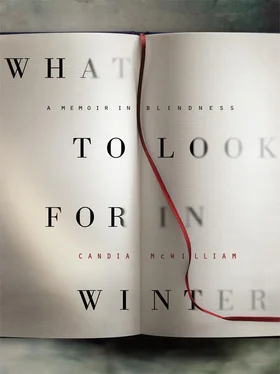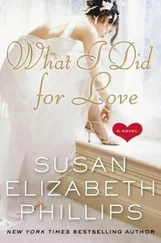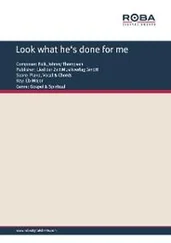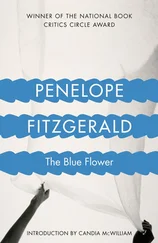McWilliams do this thing of fading out. They die young and they stay in touch with the aid of telepathy, of not writing letters and certainly not making telephone calls. They tend to eat unhealthily, to be musical and scholarly to the point of dust in their habits, with strong genes for self-effacement, religious faith (C of E in the rest of the world and Episcopalian in Scotland, or converts to Roman Catholicism), medicine and spying. They have been explorers and teachers but mostly they have been naval surgeons, musicians and secret poets. Their habits are gentle and they have a sweet tooth. Almost sickly thin in youth, they may get tubby later. It could in only some few cases be something to do with drink. It is not hard to see why they were only briefly kings of Scotland. My daughter Clementine compares them favourably with that reproductively inefficient animal, the panda. ‘McWilliams are rubbish at dating,’ she says, ‘but pandas are really rubbish at it.’
Clement himself loved the detective stories of Edmund Crispin, King Penguins, of which he had collected almost the entire run, the music of Buxtehude, Wilkie Collins. He knew his Bradshaw intimately, which of course gave him heartbreak as the railways were privatised. He slept from time to time on park benches. He wrote operas for children, preferred tinned fruit, and hummed as though continually about to hatch.
My father was not a drinker. He was a Capstan Full Strength Navy Cut untipped man. He gave up after his stroke, simply smoked seventeen in a row in the hospital and never again. Not that there was long to go. His stroke had hit him while he was walking along reading a Posy Simmonds book in Charlotte Square. Perhaps it was an excess of pleasure that felled him.
Up ahead of Clement and me is my robust Cousin Audrey. A dead ringer for Christine Keeler, Cousin Audrey is a Champagne girl, and I hope she won’t mind if I say that she is now to the north of seventy, in her cloud of fragrance purchased at Jenners, the Queen of Edinburgh department stores, and surrounded by the ghosts of terriers and horses. Cousin Audrey is my mother’s first cousin and is a Young of Young’s Malt Loaf, delicious, healthful and profitable. Young’s Malt Loaf will be remembered by some for its acronym: YOUMA, long since, to Cousin Audrey’s righteous and splendid ire, munched up by United Biscuits, now a mere crumb in Nabisco, which may be just a corner of Nestlé. Cousin Audrey keeps tabs on us all; she is not a McWilliam. McWilliams are mainly socialists and Cousin Audrey, to whom I can’t not, as you will have seen, give her full title, does , energetically, use the telephone. She has graced stages from Pitlochry to London. One of her dearest friends, a Miss Balfour-Melville, she addresses as Miss Balfour-Melville. Miss Rosalind Balfour-Melville will this week be one hundred years old; we are in May 2008. For her birthday present she has requested a new white frock with a lot of wear in it. That’s Old Edinburgh for you.
When Cousin Audrey is puffed out, she declares, ‘Whew! I’m peched.’ When she’s feeling dotty, she says, ‘I know you think I’m up the lum.’ Cousin Audrey is an alumna of a now-defunct Edinburgh school called St Trinnean’s, which is, you understand, not remotely the same as being a girl from St Margaret’s, which is quite distinct from Lansdowne House, George Watson’s Ladies’ College, Heriot’s or St George’s, which as it happens is where I went. St George’s is to the naked eye intensely Scots but to the understanding of mockers of a tubby wearer of its uniform in the nineteen-sixties, almost up-itself English.
My plaits often got filled with chewing gum on the bus or tied to the seat handles. The girls did the gum, the boys the tethering. Maybe it was the scarlet cockade on my beret embroidered with St George piercing his curly dragon and those four nouns from ‘The Knight’s Tale’, TRUTH, HONOUR, FREEDOM and COURTESY. In summer, we wore white gloves with our lightweight, fine puppystooth check, A-line coats; in winter the older girls sported a suit, known as a ‘costume’ and a cardigan in a shade named Ancient Red. I was only a ‘big girl’ for a year, but during that year was privileged to enter the mysteries of the Senior-style undergarments: white knickers, navy knickers, white cotton suspender belt and stockings, in the shade Aristoc ‘Allure’, the colour of strong tea with evaporated milk. There was a racier option, American Tan, that was a shiny auburn, the tea without the milk. The uniform came from Aitken & Niven or Forsyth’s; it goes without saying that there were distinctions between the two shops. Forsyth’s had a slightly swingier clientele and had perhaps less Old Edinburgh tone; it sold sportswear (tennis, croquet, skiing, cricket) and you sat on a polar bear to get your shoes fitted.
One of the things people ask, if they notice that you are female and gather that you might have been schooled in Edinburgh, is ‘Were you at one of those Jean Brodie style schools?’ There is of course no such thing; how Miss Brodie would have abhorred this sloppy generalising. But there’s no denying the precision of the echoes for St George’s. We were superbly taught by fine Scotswomen, mostly unwed, who had been unmanned by war. We started Latin and Greek before these languages could alarm us, while we were yet in our baby-pinafores.
My parents could not afford the fees. I got some kind of scholarship. My mother’s parents paid the rest, and I think minded. My parents fought about it. My father was vehemently agin private education. (I believe he married two women who may at least once in their lives have voted Conservative.) My maternal grandfather was self-made and highly suspicious of education beyond the respectable zones of business, boxing and golf. He read the FT and the Reading Gazette . He was quite right about the power of learning for its own sake, its huge and blessed leverage for freedom, the vital key it hands you should you require to escape.
Cousin Audrey’s hot on business too and to this very day often berates me, quite correctly and very loudly, for my pointlessness and the pointlessness of what I laughably do for a living. Nonetheless, she has in her time loyally attended readings given by me and at least one gentleman known in the wider world to be ‘that way’. She’s a bonny heckler and one of the bravest souls you will ever meet, a glamorous spinster of the old school, shrewd, courageous, greatly loved and on her own. She reads the right-wing press with close attention. It broke my heart when I suggested the Guardian or the Independent and she took up both. I feared for her imbalance. Her favourite paper is now officially the Independent, her favourite man in the world Boris Johnson, with two little pouches for my sons Oliver and Minoo. She is a man’s woman and has the hairdo to prove it, confected weekly by her dear friend Muriel Brattisani, of the famous Brattisani family, whose lobster and chips and cairry-oot Champagne are the talk of the entire globe.
My German publisher wrote to me once describing Oxford as ‘the Omphalos of the known world’. He went on to become Minister of the Arts for Germany and then, with some relief, the editor of Die Zeit.
Anyhow, Edinburgh knows that it is the centre of the known world and wheesht to your omphaloi. Has a doughnut an omphalos? We’re talking baked goods here. Omphalos? Can you export it? Well, of course you can, and we are an emigrated race, the Scots, bringing our notion of civilisation wherever we go, bridges, sugary snacks, books and stories, fighting and drinking.
What I’m trying to get round to is my birthday, the 1st of July 1955, the birthday of Julius Caesar, for whom my third name is Juliet. In October I was christened at Rosslyn Chapel, burial place of the Earls of Orkney, scene of The Lay of the Last Minstrel by Sir Walter Scott, reputed resting place of, among other things, the Holy Grail and the True Cross and scored with a number of unexplained Masonic symbols. I wrote in a novel twenty years ago about this numinous jewel in stone. Of course, its anonymity has since been rather blown by Dan Brown. It contains among countless other solid beauties, the ‘Apprentice Pillar’, a piece of carving so virtuosic that the chief mason is said to have murdered its maker, a mere apprentice, for his presumption, and then hanged himself in remorse. There is a small carving of the grieving master mason, his mouth an appalled hole. This pillar is depicted on the front of one of my father’s volumes in ‘The Buildings of Scotland’ series. Daddy died in the middle of writing Dumfries and Galloway. On the front of that volume is one of the Duke of Buccleuch’s palaces, Drumlanrig House, out of which, not very long ago, someone walked unnoticed carrying a small painting by Leonardo.
Читать дальше











